This article was medically reviewed by Shari Forschen, NP, MA. Shari Forschen is a Registered Nurse at Sanford Health in North Dakota. Shari has worked in healthcare since 1996 and her expertise lies in acute care bedside nursing on a medical oncology floor. She received her degree from Medcenter one College of Nursing in 2003 and her Family Nurse Practitioner Masters from the University of North Dakota in 2014. Shari is a member of the American Nurses Association.
There are 11 references cited in this article, which can be found at the bottom of the page.
This article has been viewed 874,005 times.
Nothing shakes your confidence more than bad breath. You caught a whiff of it at an important meeting and now you’re self-conscious. You refuse to get close to your significant other because you’re afraid of grossing them out. You don’t want to breathe on a flower for fear of making it wilt. If this is you, know that there are things you can do at a moment’s notice to reduce the pungency of your breath. But if bad breath is a frequent problem, consider how long it has been since your last trip to the dentist. Bad breath can be caused by Gingivitis, Periodontitis, foods with strong odors, gastritis (GERD), or poor brushing with left over food particles.
Steps
Fixing Bad Breath with Dental Hygiene Products
-
1Use a portable toothbrush. Some people who suffer from halitosis or are self-conscious of their breath will carry around a toothbrush with them. Bring a small tube of toothpaste. If you don’t have toothpaste, know that brushing with tap water can help reduce the smell of microbes that collect when you eat meals. Small, portable toothbrushes can be purchased at any grocery store or pharmacy cheaply.[1]
- You can also try keeping a pack of mini, disposable toothbrushes with you. This way they won't get dirty and be sanitary each time you use one.
-
2Floss your teeth. In addition to a toothbrush or in place of it, you can easily escape to the bathroom and floss your teeth. Many types of floss have a minty aftertaste that’ll help freshen your breath.
- Dentists recommend that you floss after every meal to ensure that food particles don't get lodged in between your teeth. If this seems like too much work, floss at least once a day — preferably before bedtime — to combat foul breath.[2]
- Flossing after meals is one of the best ways to combat halitosis (bad breath).
- Consider carrying floss or flossing tools, such as dental floss toothpicks, to floss easily on the go.
Advertisement -
3Use Listerine or some other type of anti-bacterial mouthwash. Listerine comes in travel-sized bottles that can easily be carried in back pockets or pocket books. Gargle for 20 seconds and spit. It will help fight bacteria that cause bad breath as well as give your mouth a fresh smell. Make sure you choose a mouth rinse that boasts anti-gingivitis and/or anti-plaque fighting power.[3]
- Listerine also makes strips that dissolve on your tongue. These are designed to combat bad breath quickly, but can be quite strong.
Chewing Things for Better Breath
-
1Chew some sugar-free gum. Sugar-free gum helps to stimulate saliva production. This will help stop your mouth from drying out. A dry mouth often leads to bad breath because bacteria responsible for the foul odor aren’t washed away. Gum can also help remove food particles from the crevasses of your teeth. Sugar-free gum isn’t a substitute for proper oral hygiene. Don’t stop brushing your teeth and flossing.[4]
- It is possible to get natural gums made from peppermint and other herbs, which will help mask the smell of bad breath in addition to removing matter from your teeth.[5]
-
2Chew herbs like mint, parsley, basil, or wintergreen. These herbs won’t clean your teeth, but they will counter your bad breath with a strong scent. This works in the short term, but shouldn’t be viewed as a long-term solution.[6] You’ll also want to beware of debris from these herbs in your teeth. You don’t want to trade bad breath for large chunks of parsley in your teeth.
-
3Chew nuts and seeds. Nuts have a powerful aroma and the abrasive texture of them will help remove any residual food particles left on your teeth, tongue or gums. Dill and fennel seeds mask odors magnificently. Anise is a licorice-flavored seed that actually has antiseptic properties.[7]
Using Water to Combat Bad Breath
-
1Drink water with lemon or lime. In addition to just be a tasty and healthy alternative to soda, this acidic water solution can have powerful effects on bad breath. Since one of the primary causes of bad breath is simply dry mouth — something normally associated with “morning breath” — the water will help moisten your mouth, subduing much of the odor.
- Squeeze as much of the lemon/lime into the water as possible, as it will help cover up the odor. The acidity of the lemons/limes will help combat those bacteria in your mouth that cause bad breath.[8]
-
2Use a portable Waterpik. This device is often used in place of floss. It uses pressurized water to rinse away food particles caught in your teeth. You can also use it to rinse off your tongue. Simply slip away to the bathroom, fill the device, and start spraying. If you have some mouthwash, you can add it to the water chamber for an added boost of bad breath fighting power.[Image:Fix Bad Breath on the Spot Step 8 Version 2.jpg|center]]
-
3Rinse your mouth with water. Then use a dry paper towel to rub each of your teeth. You can also use the inside of your shirt. This will make your teeth super smooth, like you just brushed your teeth. Then rinse your mouth again. If you have the rough brown type of paper towel, you can rub it on your tongue outwards and get some plaque coating off.[9]
Testing for Bad Breath
-
1Ask someone else. Most people try to breathe into their cupped hand in order to catch a whiff of their own breath, but too often this just gives you an idea of how your hand smells. Since our nasal passages are connected to our mouths, such a technique is not an accurate indicator of your breath’s odor. The best way to recognize bad breath on the spot is to consult someone you’re comfortable with. Find a loved one — someone you won’t turn off too badly — to quickly sniff your breath. Don’t make it obvious. Just a quick exhale will do the trick.
-
2Lick the inside of your wrist. Step to the side and lick the inside of your wrist. Because your wrist doesn’t rub up against many things, it’ll be a better indicator of your breath. Wait for your saliva to dry and then give your wrist a whiff. This is one of the most accurate ways of smelling your own breath.[10]
-
3Perform the spoon-scrape test. Take a spoon and place it upside-down on the back of your tongue. Slowly, but deliberately drag it to the front of your mouth. Now examine residue that you’ve collected on the spoon. If it is clear, then you probably don’t have bad breath. Most likely, it will be a milky-white or even a yellowish color. What you’ve collected is a film of bacteria that has accumulated on your tongue. This bacteria is what causes bad breath.[11]
- It is important to scrape the back (posterior) of the tongue when you are brushing your teeth. This is prime real estate for bacteria that cause bad breath.
- Similarly, you can perform this test with a piece of gauze — found at any pharmacy. Spoons tend to be more accessible in everyday situations.
-
4Get a Halimeter reading. The Halimeter test looks for sulfide signatures in your breath. VSCs or sulfur compounds are commonly found in the human mouth, but high levels of sulfur signatures can indicate bad breath. Sulfur smells like eggs — this is not the smell you want in your mouth during an important meeting. Most likely, your dentist will have to administer the test, but if you really want your own Halimeter, you can purchase one. They are very expensive.[12]
-
5Ask your dentist to perform a gas chromatography test. This test measures sulfur levels and several other chemical compounds found in your mouth. This is the most effective test and its readings are considered to be the gold standard.[13]
Knowing When to Visit the Dentist
-
1See a dentist if you experience chronic bad breath. If you’ve tried many of the steps listed here and you still experience bad breath, it is time to see a dentist. Bad breath is one of the most obvious signs of gum disease and plaque buildup. Your dental hygienist and dentist will be able to highlight any missing steps in your dental hygiene routine and help you combat any dental issues you might be having.[14]
-
2Visit a dentist if you’ve noticed white spots on your tonsils. Maybe you’ve been looking in your mouth, trying to figure out what is causing your bad breath. If you’ve noticed little white flecks stuck to the back of your mouth on either side of your uvula (the dangling ball in the back of your mouth), you should go visit a dentist. These white specks are known as tonsil stones. They are calcified food, mucus, and bacteria clumps. While they are not uncommon, they need to be removed with care.
- French researchers discovered that around six percent of people have some degree of tonsil stone buildup.[15]
-
3See a dentist or a doctor if you suffer from chronic dry mouth and bad breath. There are several causes of dry mouth induced bad breath. While dehydration is the primary cause, certain conditions, medications, and other systemic issues can cause dry mouth. Stuffy noses, diabetes, side-effects from antidepressants, antihistamines, and diuretics, radiotherapy, and Sjögren’s syndrome can all cause dry mouth. Your dentist will point you in the direction of a physician for many of these tests, but can help identify possible causes of your dry mouth.[16]
Expert Q&A
-
QuestionWhat is an instant method to get rid of bad breath?
 Shari Forschen, NP, MAShari Forschen is a Registered Nurse at Sanford Health in North Dakota. Shari has worked in healthcare since 1996 and her expertise lies in acute care bedside nursing on a medical oncology floor. She received her degree from Medcenter one College of Nursing in 2003 and her Family Nurse Practitioner Masters from the University of North Dakota in 2014. Shari is a member of the American Nurses Association.
Shari Forschen, NP, MAShari Forschen is a Registered Nurse at Sanford Health in North Dakota. Shari has worked in healthcare since 1996 and her expertise lies in acute care bedside nursing on a medical oncology floor. She received her degree from Medcenter one College of Nursing in 2003 and her Family Nurse Practitioner Masters from the University of North Dakota in 2014. Shari is a member of the American Nurses Association.
Master's Degree, Nursing, University of North Dakota To instantly get rid of bad breath, brush your teeth and tongue with minty toothpaste and a toothbrush. Staying hydrated with lots of water throughout the day also helps.
To instantly get rid of bad breath, brush your teeth and tongue with minty toothpaste and a toothbrush. Staying hydrated with lots of water throughout the day also helps. -
QuestionHow to get rid of saliva accumulation during night sleep?
 Sarah Gehrke, RN, MSSarah Gehrke is a Registered Nurse and Licensed Massage Therapist in Texas. Sarah has over 10 years of experience teaching and practicing phlebotomy and intravenous (IV) therapy using physical, psychological, and emotional support. She received her Massage Therapist License from the Amarillo Massage Therapy Institute in 2008 and a M.S. in Nursing from the University of Phoenix in 2013.
Sarah Gehrke, RN, MSSarah Gehrke is a Registered Nurse and Licensed Massage Therapist in Texas. Sarah has over 10 years of experience teaching and practicing phlebotomy and intravenous (IV) therapy using physical, psychological, and emotional support. She received her Massage Therapist License from the Amarillo Massage Therapy Institute in 2008 and a M.S. in Nursing from the University of Phoenix in 2013.
Registered Nurse An increased amount of saliva at night might be caused from the inability to keep your mouth closed when sleeping. Try practicing breathing with your mouth closed and through your nose before going to bed. Sometimes people will have excess saliva accumulation with a swallowing issue is present.
An increased amount of saliva at night might be caused from the inability to keep your mouth closed when sleeping. Try practicing breathing with your mouth closed and through your nose before going to bed. Sometimes people will have excess saliva accumulation with a swallowing issue is present. -
QuestionHow can you regulate stomach acidity that is leading to bad breath?
 Sarah Gehrke, RN, MSSarah Gehrke is a Registered Nurse and Licensed Massage Therapist in Texas. Sarah has over 10 years of experience teaching and practicing phlebotomy and intravenous (IV) therapy using physical, psychological, and emotional support. She received her Massage Therapist License from the Amarillo Massage Therapy Institute in 2008 and a M.S. in Nursing from the University of Phoenix in 2013.
Sarah Gehrke, RN, MSSarah Gehrke is a Registered Nurse and Licensed Massage Therapist in Texas. Sarah has over 10 years of experience teaching and practicing phlebotomy and intravenous (IV) therapy using physical, psychological, and emotional support. She received her Massage Therapist License from the Amarillo Massage Therapy Institute in 2008 and a M.S. in Nursing from the University of Phoenix in 2013.
Registered Nurse Diet, lifestyle, weight, digestive disorders, age, dysbiosis (bacteria imbalance), and many other factors can cause an imbalance in your stomach acid. You must first determine the cause of your stomach acid issue before you can regulate it. Take a look into each of the factors listed here to help you determine what is causing the acid imbalance.
Diet, lifestyle, weight, digestive disorders, age, dysbiosis (bacteria imbalance), and many other factors can cause an imbalance in your stomach acid. You must first determine the cause of your stomach acid issue before you can regulate it. Take a look into each of the factors listed here to help you determine what is causing the acid imbalance.
References
- ↑ http://patient.info/health/oral-hygiene
- ↑ http://www.colgate.com/en/us/oc/oral-health/basics/brushing-and-flossing/article/how-to-floss
- ↑ http://www.ada.org/en/science-research/ada-seal-of-acceptance/product-category-information/mouthrinses
- ↑ http://www.nhs.uk/Livewell/embarrassingconditions/Pages/bad-breath.aspx
- ↑ http://www.health911.com/bad_breath
- ↑ http://www.health911.com/bad_breath
- ↑ http://www.health911.com/bad_breath
- ↑ http://patient.info/health/bad-breath-halitosis
- ↑ http://patient.info/health/bad-breath-halitosis
- ↑ http://www.animated-teeth.com/bad_breath/t1_halitosis.htm
- ↑ http://www.animated-teeth.com/bad_breath/t1_halitosis.htm
- ↑ http://store.halimeter.com
- ↑ http://www.animated-teeth.com/bad_breath/t1_halitosis.htm
- ↑ http://www.mouthhealthy.org/en/az-topics/b/bad-breath
- ↑ http://www.dailymail.co.uk/health/article-1213457/Bad-breath-It-nasty-case-tonsil-stones.html
- ↑ http://www.nhs.uk/conditions/dry-mouth/Pages/Introduction.aspx
About This Article
To fix bad breath on the spot, brush your teeth with a small, portable toothbrush using toothpaste if you have it or plain water if you don’t. You can even just rinse your mouth with water, use a paper towel to rub your teeth and tongue, and rinse your mouth a second time to “brush” your teeth and freshen your breath! If you can, drink a glass of water with lemon or lime, since acidic fruits cover up smells and fight odor-causing bacteria. You can also chew sugar-free gum, which prevents dry mouth that can lead to bad breath. For more tips from our Medical reviewer on fixing bad breath, including by eating nuts, scroll down!
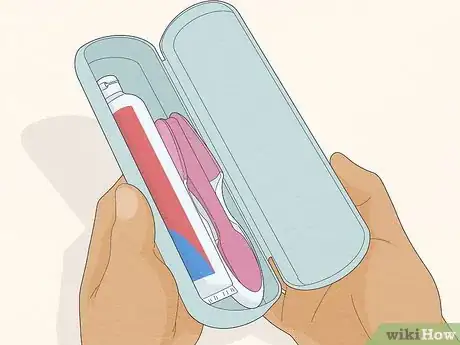
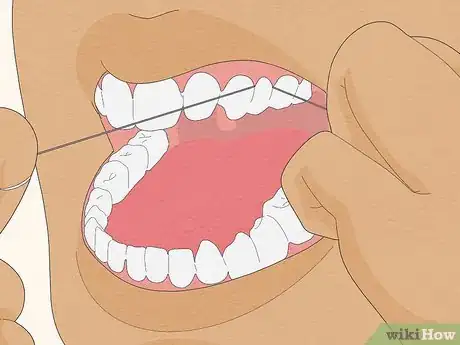
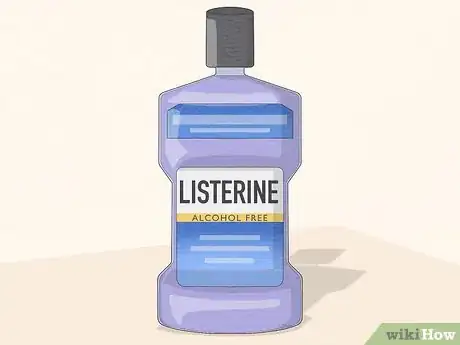
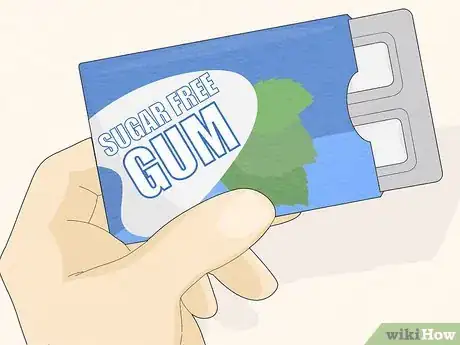
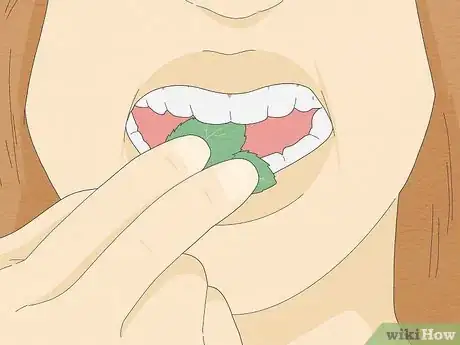
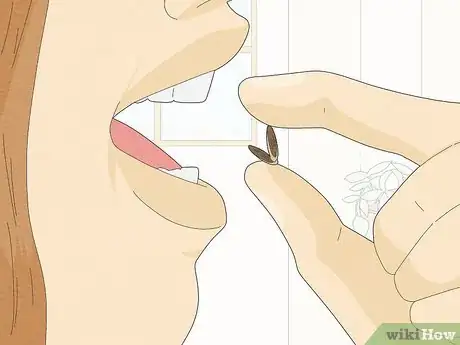
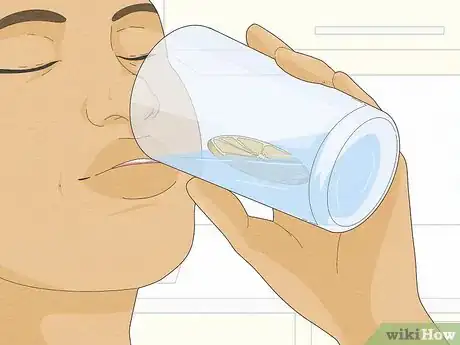
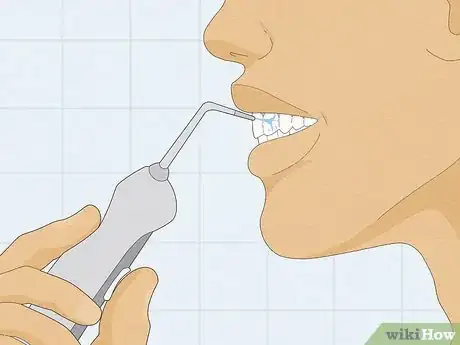
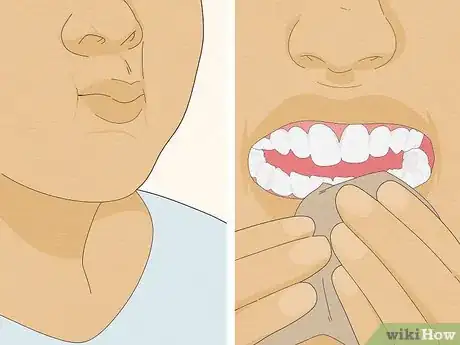
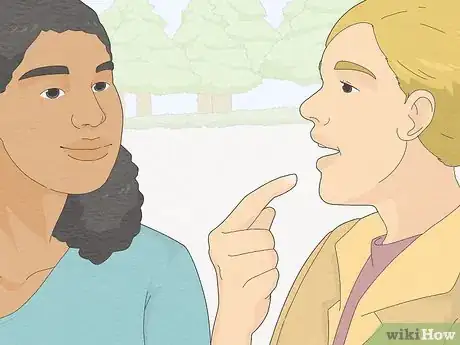
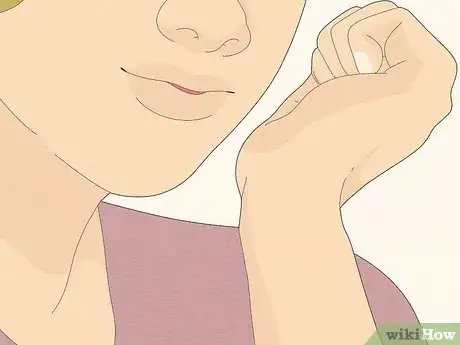
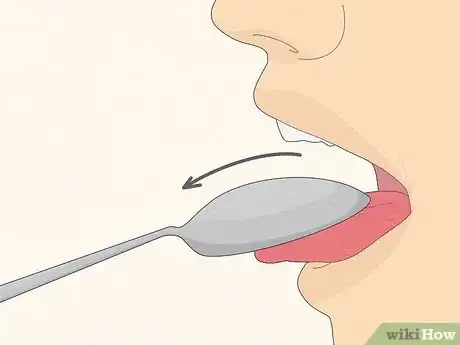
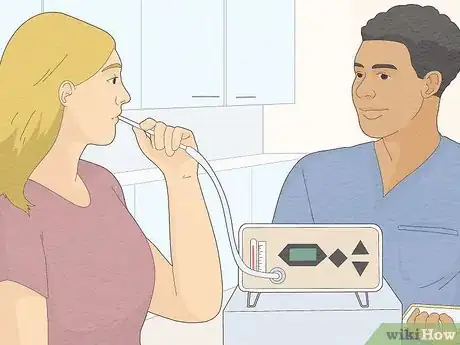
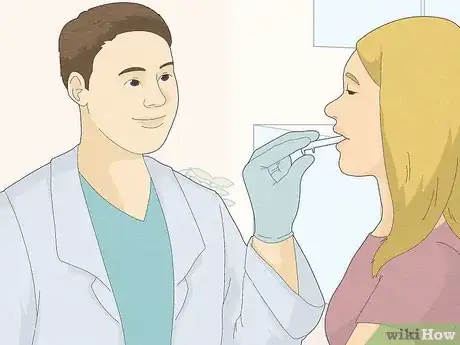
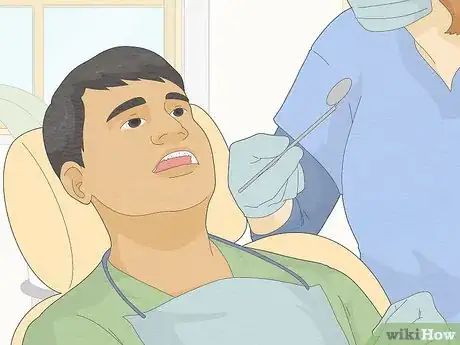
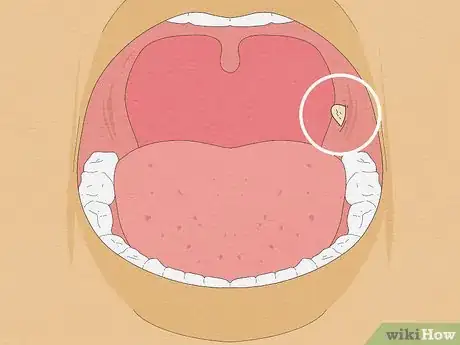
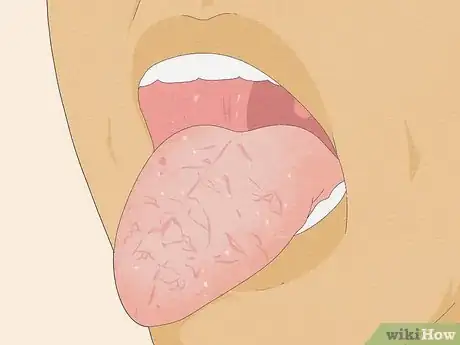


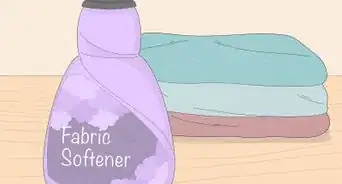

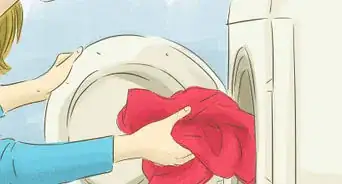

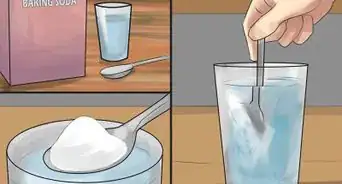
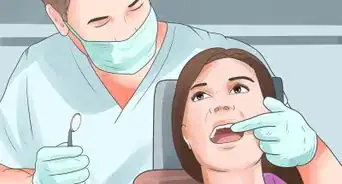
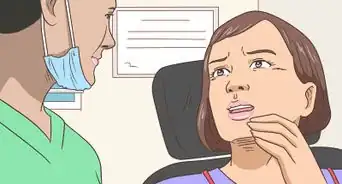
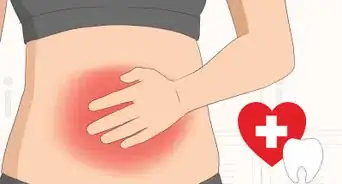













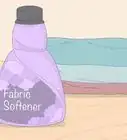
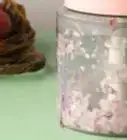



































Medical Disclaimer
The content of this article is not intended to be a substitute for professional medical advice, examination, diagnosis, or treatment. You should always contact your doctor or other qualified healthcare professional before starting, changing, or stopping any kind of health treatment.
Read More...